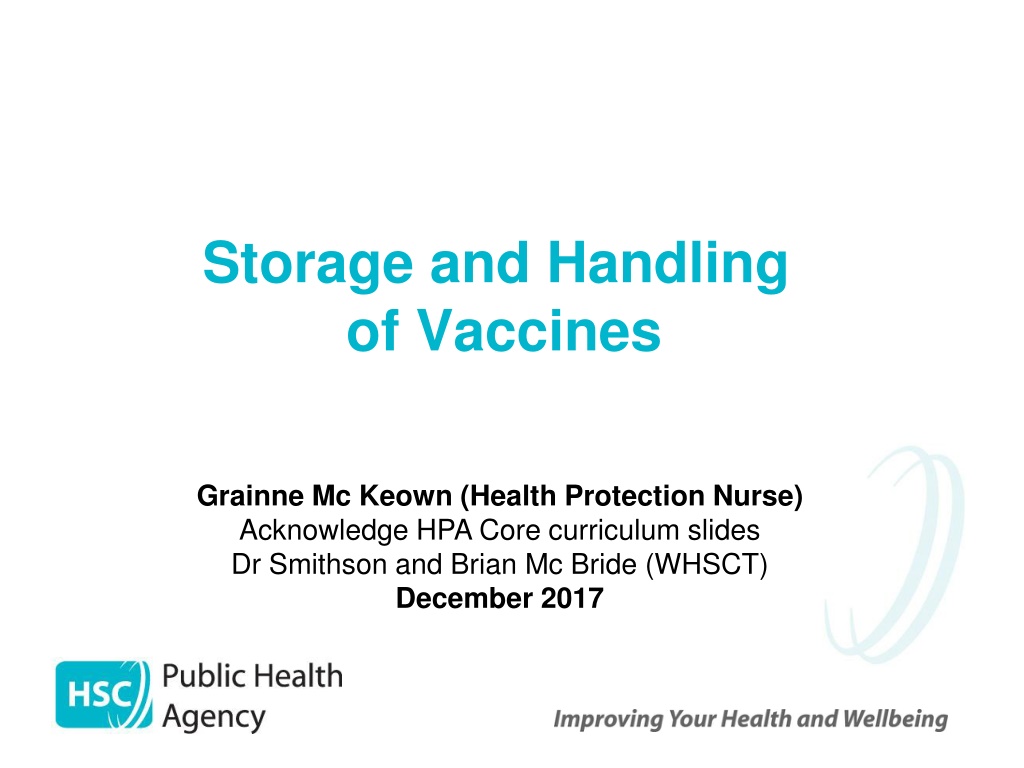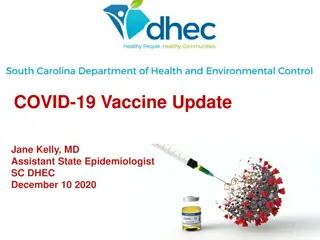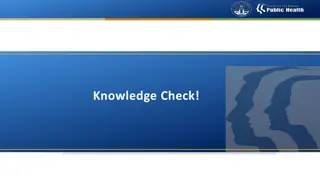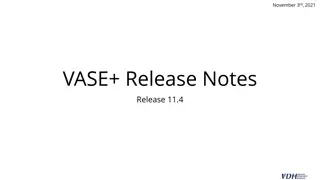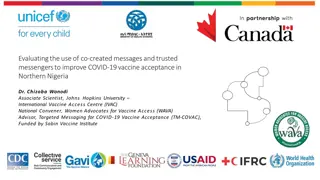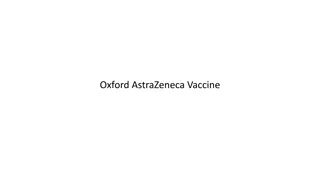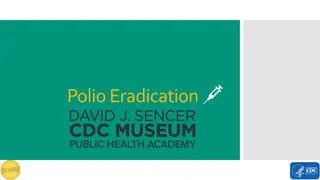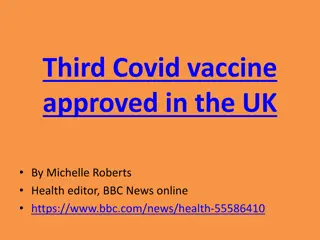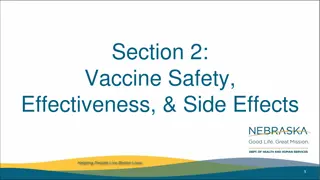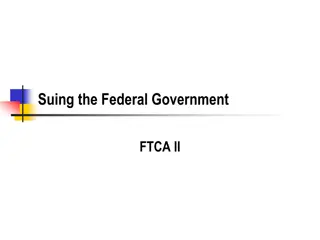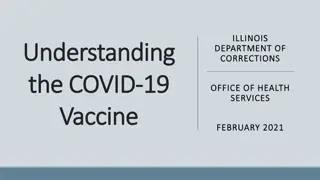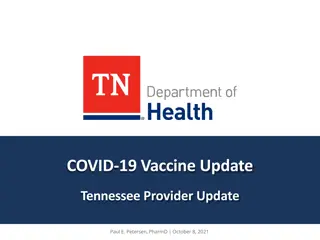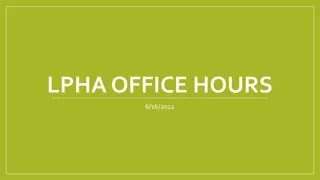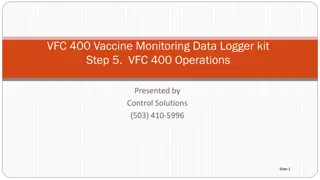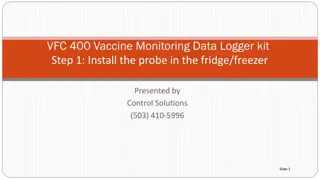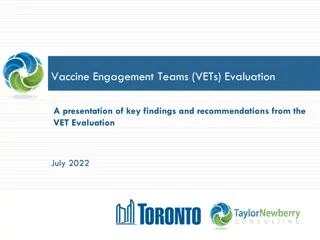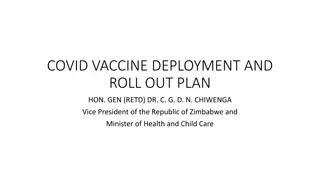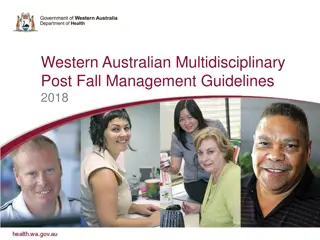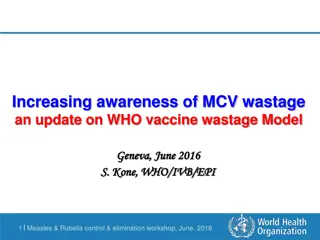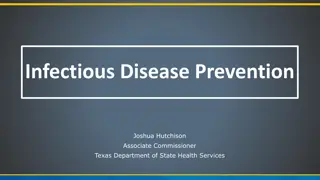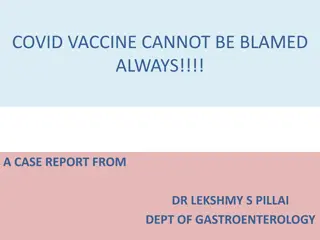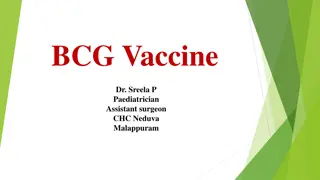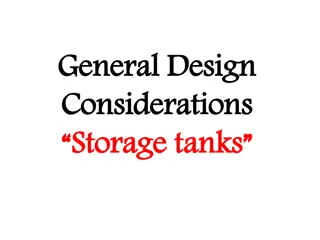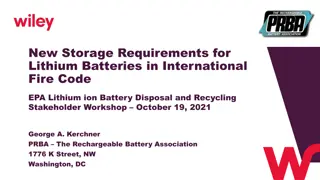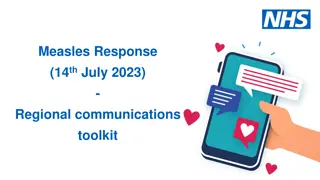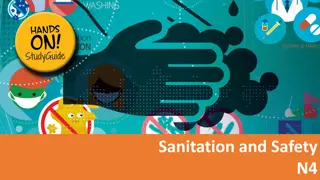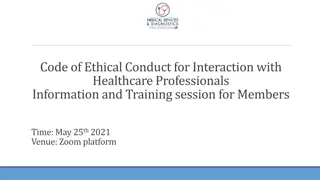Vaccine Storage and Handling Guidelines: Key Points for Healthcare Professionals
Proper storage and handling of vaccines within the cold chain system is crucial to maintain vaccine potency and efficacy. This includes maintaining temperatures between 2-8°C, managing cold chain breakdowns, and auditing practices. Failure to comply can result in ineffective vaccines, increased costs, poor public perception, and reduced vaccination rates. Policies and designated personnel play a vital role in ensuring cold chain integrity and compliance.
Download Presentation

Please find below an Image/Link to download the presentation.
The content on the website is provided AS IS for your information and personal use only. It may not be sold, licensed, or shared on other websites without obtaining consent from the author. Download presentation by click this link. If you encounter any issues during the download, it is possible that the publisher has removed the file from their server.
E N D
Presentation Transcript
Storage and Handling of Vaccines Grainne Mc Keown (Health Protection Nurse) Acknowledge HPA Core curriculum slides Dr Smithson and Brian Mc Bride (WHSCT) December 2017
Key Message Vaccines should be stored between 2- 8 C Action should be taken if there is a breach in cold-chain
Contents The importance of the cold-chain The effects of temperature (heat & freezing) and exposure to light on vaccine potency and efficacy The requirements for the correct ordering, delivery and storage of vaccines in the workplace The management of breakdowns in the cold-chain, where to dispose of damaged vaccines, who to inform and what action to take Auditing management of cold chain within your area of practice
What is the Cold-Chain? The cold chain refers to the system of storing & transporting vaccines within the recommended safe temperature range of 2- 8 degrees Celsius.
The Cold-Chain Manufacturer Distributor Provider ..from the manufacturer to the patient
Cold Chain Anyone handling vaccines should follow appropriate procedures to ensure cold-chain compliance Vaccines are licensed products and if not stored appropriately = unlicensed use / off label use / off-license use
It is important to maintain the cold-chain because .. Vaccines are sensitive biological substances, effectiveness may be lost if they are stored outside of 2-8 C desired immune response may not be achieved = poor protection Loss of vaccines and cost to health service Poor publicity and reduced uptake rates
Policies are essential because. It may not be possible to tell by examination if vaccine has been stored appropriately Policy should be followed to ensure cold-chain has been maintained and provide evidence of compliance Unless specific advice states otherwise if vaccines are not stored / distributed properly, they should not be used Each GP practice should nominate a lead person (vaccine controller) and a deputy to manage vaccine ordering, storage and management
Sensitivity to heat, cold and light Most vaccines should be kept between +2C and +8C (but check manufacturers guidance) Freezing may cause increased reactogenicity and loss of potency, may crack glass leading to contamination Most vaccines less sensitive to heat but potency cannot be guaranteed above 8C Also very sensitive to strong light, so should always be protected against light store in original packing until point of use
Vaccine Storage Use a dedicated specialised pharmaceutical refrigerator X No food or medical specimens Safeguard electricity supply X Do not place fridge near heat source & keep well ventilated No more than 50% full Group vaccines by type (Paediatric, Adult, Adolescent) Rotate Stock X Do not remove vaccines from original boxes until ready to use Defrost/calibrate fridge regularly X Do not store vaccines in fridge doors or in solid plastic trays/containers within the fridge Ensure back up facilities are available in the event of fridge failing Keep door opening to a minimum Picture taken from www.medisave.co.uk
Vaccine Refrigerator Specialised refrigerators are available for the storage of pharmaceutical products and must be used for vaccines and diluents There should be a maintenance contract in place that allows for at east yearly servicing of fridges and calibration of temperature gauge. Records should be kept of this Ice should not be allowed to build up. Records should be kept of servicing, defrosting and cleaning Approved cool box or alternative fridge should be used when defrosting (temp monitored)-vaccines only replaced when fridge is at correct temperature Vaccines are POMs and should be stored under locked conditions
Vaccine refrigerator temperatures Temperature readings should be continually monitored with a minimum-maximum thermometer All fridges should ideally have two thermometers, one of which is independent of mains power Strongly recommend use of data-loggers Annual calibration / consider replacement of thermometer Care should be taken that the thermometer probe cable does not interfere with the door seal Opening and closing the refrigerator door should be kept to a minimum in order to maintain a constant temperature
Temperature Monitoring Observe the 4 Rs Read Record Reset React Do make sure that the person making the recording Records it at the same time every day during the week and signs the sheet Records it in a standard fashion and on a standard form Acts if temperature is outside of +2-+8 C Resets the thermometer after every reading Remember if stored outside of +2-+8 C as per licensing conditions is off-label and cannot be administered under PGD
Data Loggers New standard recommends Data Loggers Continually measure temperature of fridge and record every 5 minutes / more frequently When plugged into computer allow continuous reading display since last read Can tell how long has been outside of temperature range Should be calibrated annually
Storage Temperature Should never exceed 8 C or fall below 2 C Aim for 5 C Aim to maintain vaccine fridge as close as possible to 5 C as this gives a safety margin of + or 3 C
What to do if there has been a Cold Chain failure Prior to administration Contact Pharmacy Department of local Trust for advice depending on circumstances vaccine can sometimes be used Any vaccine that has not been stored at a temperature of 2-8 C as per its licensing conditions = unlicensed use / off-label Where there is any doubt that cold chain has not been maintained, vaccines should not be used Written procedure for the disposal of vaccines by incineration should be available locally (Inform Duty-room of vaccine wastage / email details of wastage straight to pha.immunisation.hscni.net )
What to do if there has been a Cold Chain failure Post administration Treat as Serious Untoward Incident Inform Practice Manager/Line Manager/PHA of the incident Suspend all immunisation clinics until resolved Ensure that everyone knows not to use vaccines until advice has been received from pharmacy Duty-room can provide advice on re-vaccination if required
Ordering and Monitoring of Stock Vaccine stocks should be monitored by designated person to avoid over ordering or stockpiling There should be no more than 2-4 weeks supply Stocks should be arranged so those with shorter expiry dates are used first Out of date stock should be removed from fridge, and correctly disposed of Vaccines must never be used past their expiry date unless advised otherwise by Manufacturer or PHA
Excess stock may: Increase risk of vaccination with out of date vaccines Increase dangers of over-packed fridge leading to poor airflow, potential freezing and poor stock rotation Delay introduction of new vaccines until local stocks are used Increase pressure on clinic fridges during period of high demand e.g. during flu vaccine season
Storage of Vaccines Must be kept in original packing Must not be stored in door, bottom drawers or next to freezer plate areas where temperatures most likely to go out of range Allow enough space for air to circulate freely
Vaccine not used at clinic All reconstituted vaccines and opened single and multi-dose vials must be used within manufacturers recommended time and should be disposed of correctly. Unopened vaccines, kept in cool box, can be returned to fridge, but should be labelled and used first next time.
Cool Boxes and Transporting vaccines Do Use a validated cool box & cool packs Monitor max/min temperatures regularly when in use Keep vaccines in original packaging Do Take only enough for particular session Prevent direct contact with cool packs Choose appropriate size of cool box Mark vaccines removed & use as soon as possible after return Do Not Freeze Cool Packs
Audit management of cold-chain http://www.ips.uk.net/professional- practice/quality-improvement-tools/quality- improvement-tools/ Vaccine Storage and Transportation
